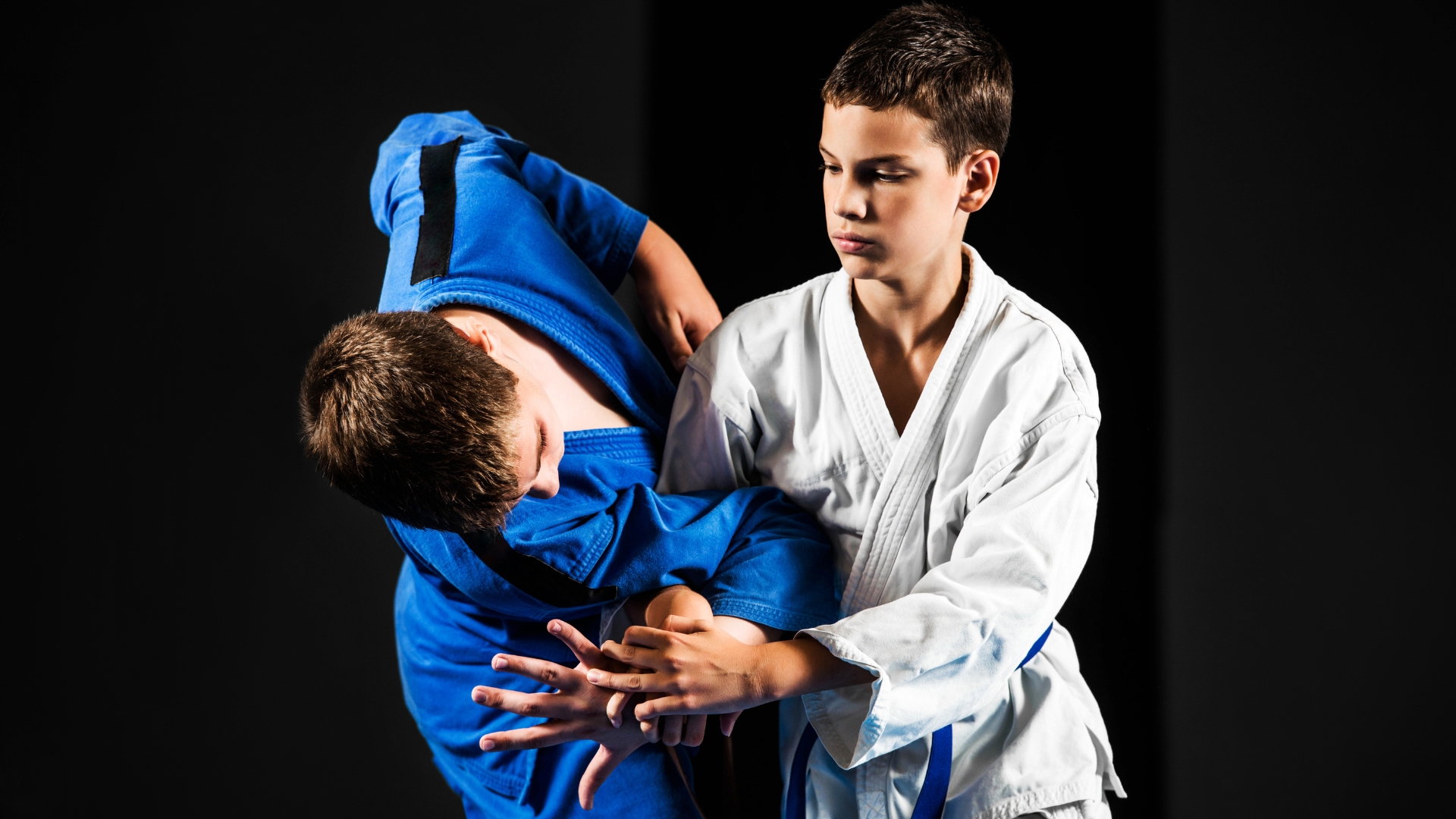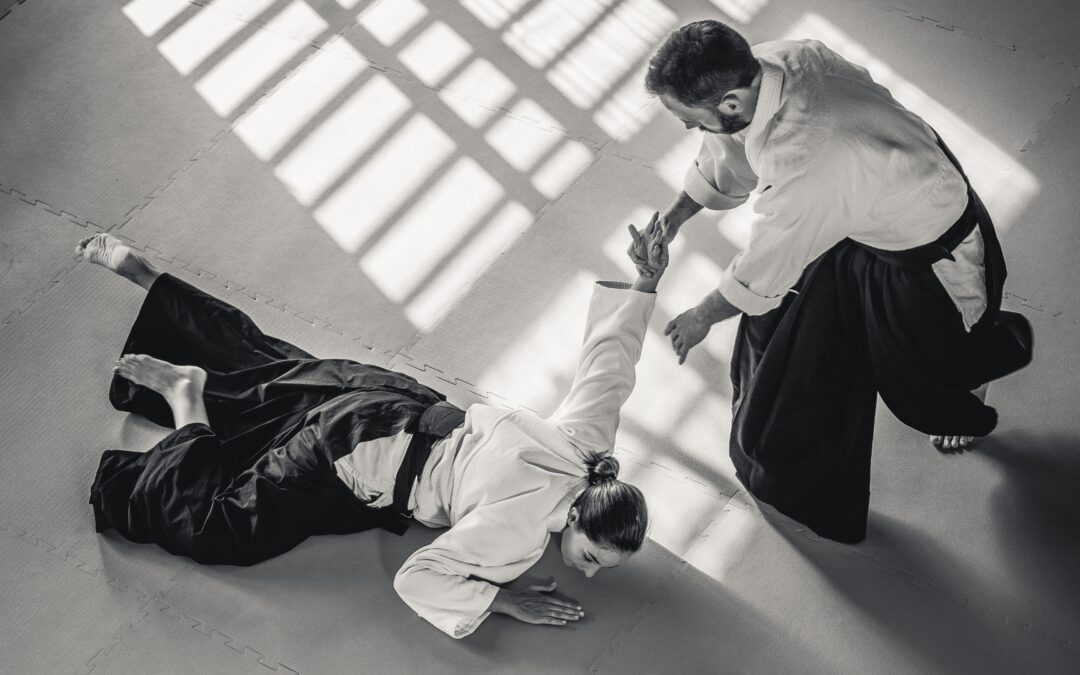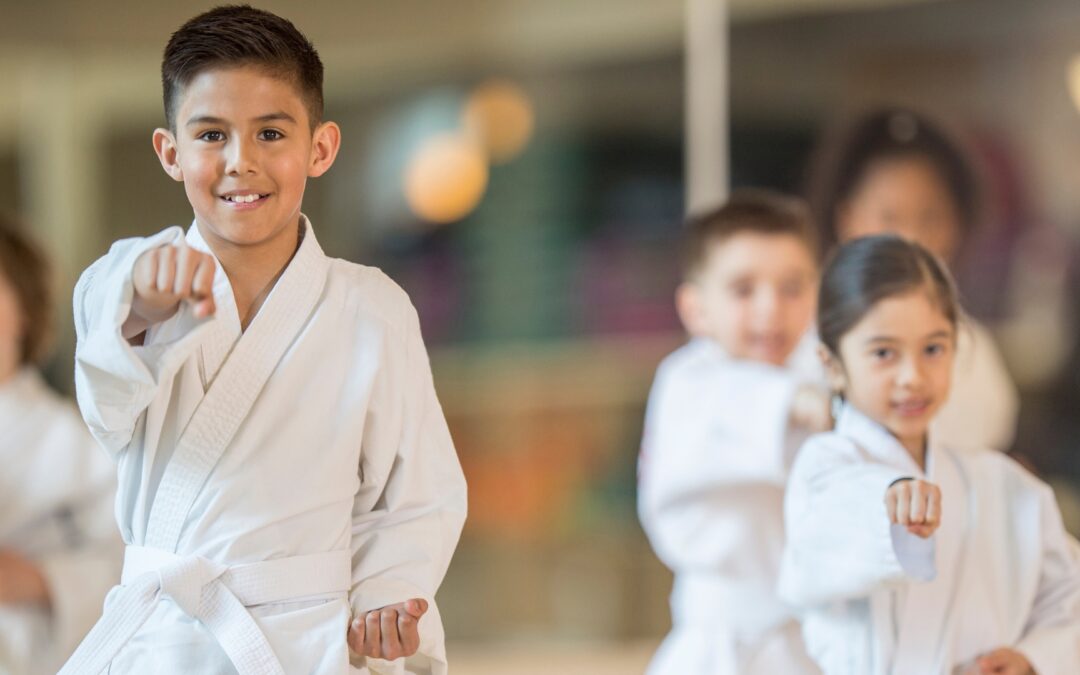Aikido Fighting Style
Aikido is a defensive Japanese martial art practiced around the world. Students of aikido utilize throws, joint locks, and circular movements to neutralize an opponent’s attack without direct confrontation. They also learn life skills, self-defense, balance, and harmony with their environment. Allow us to describe the history, principles, and basics of the aikido fighting style.

History of Aikido
Aikido was founded in the early 20th century by Morihei Ueshiba, a renowned Japanese martial artist. He studied various forms of unarmed combat and combined them into one comprehensive system. His goal was to create a nonviolent form of self-defense that focused on redirecting an attacker’s energy rather than using force to overpower them.
Principles of Aikido
Aikido is founded upon three main principles: blending, entering, and redirecting. It also aligns with several tenets of Zen Buddhism, which teaches heightened awareness and an appreciation for life itself. By utilizing these principles, aikido students (aikideshi) are able to effectively defend themselves against any type of attack without having to resort to brute force.
In the aikido fighting style, blending involves using your body’s movement to create angles of evasion that allow you to move around an attacker. Entering refers to moving into a position where you can use your bodyweight to control or manipulate an attacker’s movements. Finally, redirecting is about using momentum from an attacker’s motion to throw them off balance and gain control of their arms or legs.
Aikido Techniques
To defend themselves from an attacker, aikideshi employ a wide variety of aikido techniques. They generally include targeted joint locks, throws, and precise pins. These techniques are designed with the goal of subduing attackers without causing them severe harm.
Joint locks involve applying pressure on joints such as elbows or wrists to disable an assailant. Throws use the momentum from an attacker to throw them off balance, and pins involve controlling an assailant’s body movement by applying pressure to vulnerable parts of their body.
Aikideshi must also learn how to fall safely. This allows them to receive aikido techniques without risking injuries like sprains, strains, and broken bones. That’s why one of the first things every student of aikido learns is Ukemi (receiving body). Ukemi is essentially the safest way to break a fall, and it involves relaxing one’s body, outstretching one’s arms, and rolling off one’s back to reduce pressure on knees and elbows.
At its core, Aikido is based on circular motion known as tai sabaki (repositioning or whole-body movement). This technique allows aikideshi to throw or pin their opponents without relying on brute strength or aggression. Instead, it relies on timing and body positioning for maximum efficiency when dealing with an attack. The primary focus is on neutralizing an attack and avoiding injury rather than causing harm or winning a fight outright.
Benefits of the Aikido Fighting Style
Aside from teaching students effective self-defense skills, aikido also provides them with several other benefits to both physical fitness and mental health. Physically, martial arts like aikido can improve core strength, coordination, flexibility, and balance by stretching, rolling, and mastering techniques over time. Plus, they can improve mindfulness, concentration, and self-esteem while highlighting important lessons about discipline, community, and respect for others.
The aikido fighting style teaches more than how to defend yourself in dangerous situations. It also educated students on essential life skills, which often translates to general well-being. First, aikido helps to improve flexibility and coordination due to its emphasis on balanced, intentional movements. Students also find that it improves mental clarity and helps to reduce their stress levels through relaxation techniques like meditation and breath work. Finally, aikido emphasizes personal discipline and respect for yourself and your peers—traits that are invaluable in life outside any dojo.
Try the Aikido Fighting Style
The defensive martial art of aikido teaches nonviolence, self-defense, and harmony with oneself and their environment. This fighting style provides aikideshi with countless physical and mental benefits that extend to almost every aspect of their life. It’s no wonder why countless students continue to practice aikido over a century after its founding.
Everyone deserves to live a rewarding and harmonious life. That’s why we proudly offer free trial classes at our dojo in Lincoln, Nebraska. If you have any questions or concerns about the aikido fighting style, then we welcome you to contact us for more information today.

Finding Your Fit: Exploring Unique Martial Arts Styles for Your Kids
Choosing the right martial arts styles for your child is like finding the perfect puzzle piece—it...

Hapkido vs. Aikido: Understanding the Contrasts and Similarities
Comparing Hapkido vs. Aikido showcases these distinct yet interconnected practices, each of which...

How Our Kids Can Learn Nonviolent Resistance Through Aikido
In a world that often feels chaotic and uncontrolled, instilling values of peace and nonviolent...
Visit Us!
PHONE
ADDRESS
4215 South 33rd Street
Lincoln, Nebraska 68506
Hours
Mondays Closed
Tuesday- 5:30 p.m - 8:30 p.m.
Wednesday- 6:30p.m. - 7:30p.m.
Thursday- 5:30 p.m - 8:30 p.m.
Fridays Closed
Saturday- 10 a.m. - 1 p.m.
Sundays Closed
Try a Class!
Interested in trying one of our classes? Choose your class level and schedule a trial appointment today! Discover Aikido and discover yourself!
